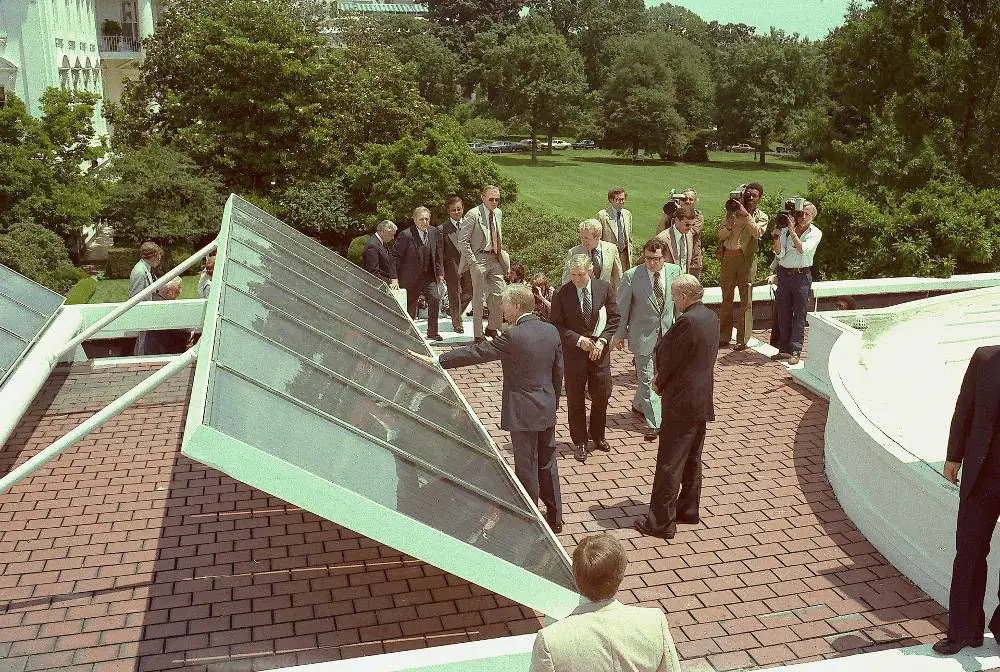Solar farms are ushering in a transformative era in the United States, reshaping the landscape of clean energy production. These vast arrays of solar panels serve as a beacon of sustainability, harnessing the power of the sun to generate electricity. Their presence marks a significant stride toward reducing our carbon footprint and mitigating the impacts of climate change. With the potential to provide abundant and renewable energy, solar farms have become an emblem of eco-conscious progress. As the nation increasingly embraces this renewable energy source, the shift to solar farms demonstrates our commitment to a cleaner, more sustainable future, laying the foundation for a greener and more environmentally responsible energy landscape.
A remarkable exemplar of the commitment to clean energy is the solar farm owned by former President Jimmy Carter in Plains, Georgia. This impressive solar facility spans 10 acres of land and boasts a collection of 3,852 solar panels, generating a substantial 1.3 megawatts of power on sunny days. A significant portion of Plains, Georgia, approximately 50%, derives its electricity from this eco-friendly source, substantially diminishing its reliance on conventional energy resources. Nevertheless, it’s essential to note that Carter’s solar farm is just one of numerous such installations contributing significantly to the national shift towards sustainable energy solutions.
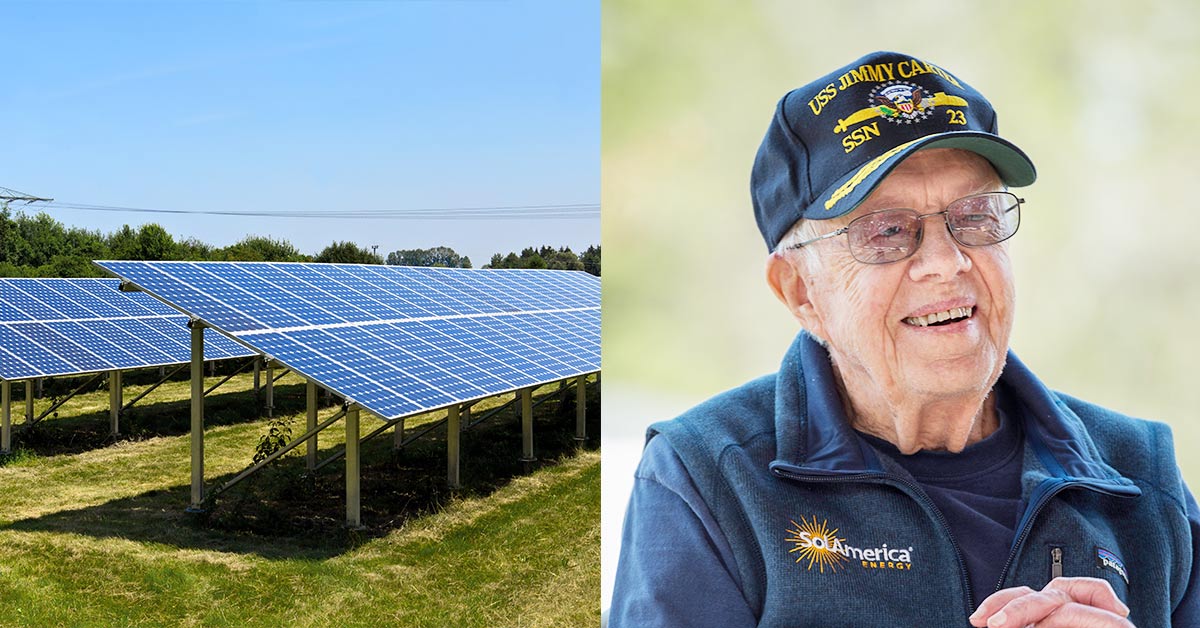
Jimmy Carter has a longstanding history as a proponent of clean energy initiatives. His dedication to this cause is particularly evident in his actions as President in 1979 when he made history by installing 32 thermal solar panels atop the White House. Regrettably, these pioneering panels were subsequently removed during the administration of President Ronald Reagan. However, President Carter’s passion for clean energy was undeterred, evolving into the establishment of his own solar farm in Georgia. This enterprise is a testament to his enduring commitment to sustainable practices and his role as a trailblazer in advocating for cleaner, more environmentally friendly energy solutions.
Former President Jimmy Carter’s solar farm in Plains, Georgia, is not only an embodiment of his unwavering dedication to clean energy but also an example of how individuals can make a substantial impact in reducing carbon footprints and promoting the adoption of renewable energy sources. By generating a substantial portion of Plains’ electricity needs through solar power, Carter’s initiative serves as an inspiration for communities and leaders across the country to embrace sustainable energy alternatives and work towards a more environmentally conscious future.
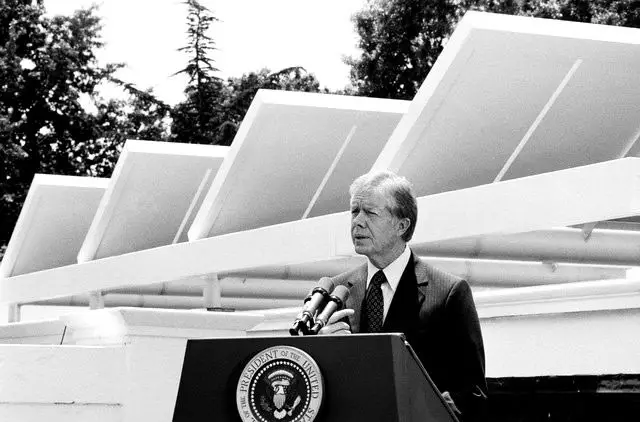
Both President George Bush and President Barack Obama underscored the significance of solar energy and took proactive steps to demonstrate their commitment during their respective presidential tenures. In a symbol of their dedication to renewable energy sources, both leaders oversaw the installation of solar panels at the White House. In 2014, President Obama, in a notable move, reinstated a 6.3-kilowatt array of solar panels on the White House roof. This not only served as a powerful emblem of their commitment to clean energy but also as a beacon of hope for the widespread adoption of sustainable practices across the nation.
“A generation from now, this solar heater can either be a curiosity, a museum piece, an example of a road not taken or it can be a small part of one of the greatest and most exciting adventures ever undertaken by the American people; harnessing the power of the sun to enrich our lives as we move away from our crippling dependence on foreign oil.”
Former U.S. President Jimmy Carter
In the heart of Plains, Georgia, a groundbreaking endeavor is taking shape, one that embodies the fusion of visionary leadership, renewable energy, and environmental stewardship. Former President Jimmy Carter, renowned for his commitment to sustainable practices, has embarked on an ambitious project that promises to alter the energy landscape of his beloved hometown. With unwavering dedication, he is overseeing the construction of a state-of-the-art solar farm, set to empower nearly half of Plains’ energy needs through the abundant power of the sun.
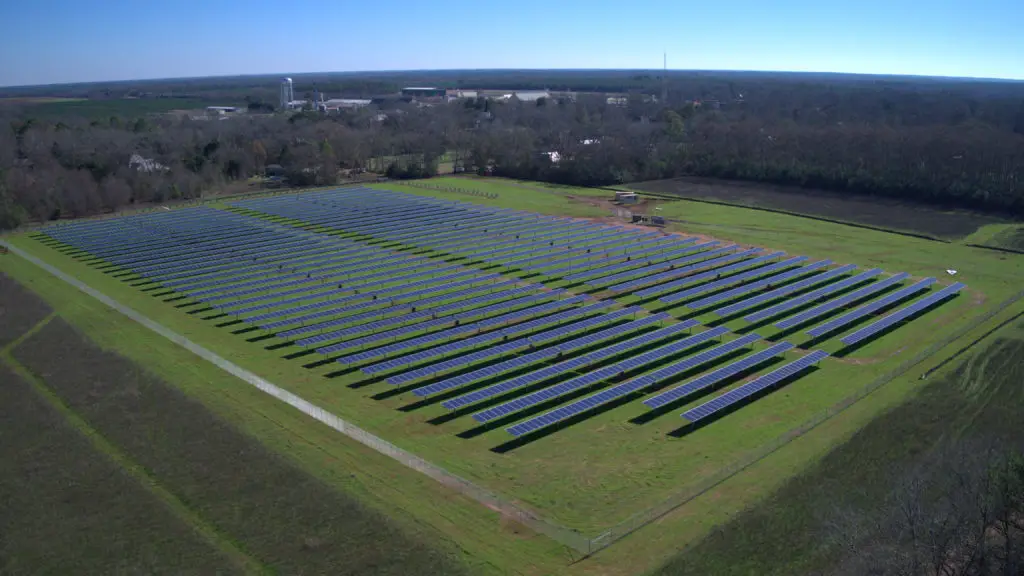
Impact on Energy Consumption:
- Reduced Reliance on Fossil Fuels: One of the most significant impacts of the solar farm is the reduced reliance on fossil fuels. Plains, like many cities, used to depend heavily on conventional energy sources, such as coal and natural gas. However, with the solar farm in operation, a significant portion of the city’s energy needs are met with clean, renewable energy, leading to a decrease in greenhouse gas emissions.
- Increased Energy Independence: By generating its electricity from the sun, Plains has become less dependent on external energy sources. This newfound energy independence provides the city with greater resilience against energy price fluctuations and supply disruptions, ensuring a stable energy supply for its residents and businesses.
- Lower Energy Costs: Over time, the solar farm has helped lower energy costs for Plains’ residents and businesses. Solar energy is not only sustainable but also cost-effective in the long run. As a result, residents have witnessed reductions in their energy bills, making clean energy more accessible to everyone in the community.
- Environmental Benefits: The solar farm has had a positive impact on Plains’ environment. By reducing the burning of fossil fuels, it has improved air quality and reduced carbon emissions. This, in turn, contributes to cleaner air, lower health care costs, and a healthier living environment for the city’s residents.
- Educational and Community Engagement: The presence of the solar farm has sparked educational initiatives and community engagement. Schools, local organizations, and individuals have become more aware of renewable energy’s benefits and have participated in various programs aimed at promoting sustainability and environmental stewardship.
The solar farm in Plains, Georgia, represents a significant step towards generating clean energy and reducing the city’s carbon footprint. Its impact on energy consumption has been profound, leading to reduced reliance on fossil fuels, greater energy independence, lower costs, and improved environmental quality. Beyond its practical benefits, the solar farm has also fostered a sense of community engagement and environmental awareness. It stands as a shining example of how sustainable energy initiatives can transform not only a city’s power supply but also its commitment to a greener, more sustainable future.
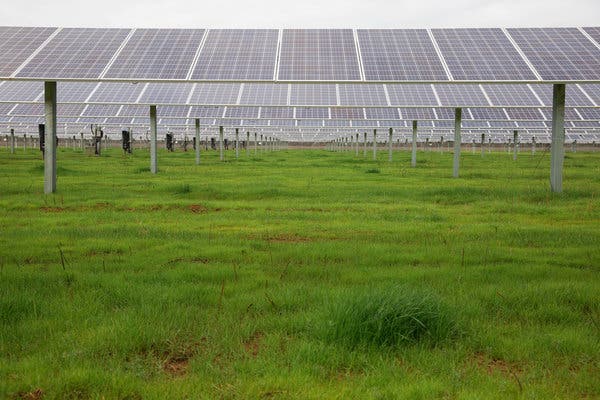
Solar Farms in the United States
The United States has been at the forefront of solar farming technology. In 2018, California led the way by installing 3.3 gigawatts (GW) of solar capacity. Solar farms now contribute to 14% of California’s energy production.2
Other notable solar farms in the country include the Solar Star farms in Kern and Los Angeles Counties, the Topaz Solar Farm in Carrizo Plain of San Luis Obispo County, California, and the Ivanpah Solar farm in Clark Mountain, California.
With the success of solar farms like Carter’s in Plains, Georgia, it is evident that clean renewable energy is not only feasible but also essential for a sustainable future. As we face the challenges of climate change, embracing solar power and other clean energy solutions is crucial for mitigating its impacts and reducing our dependence on fossil fuels.
- “Jimmy Carter’s Solar Farm Providing Power for Half of His Hometown.” Intelligent Living. Dan Edel. February 23, 2020.
- “Jimmy Carter’s solar plant powers half his Georgia hometown.” Inhabitat. Teresa Bergen. February 25, 2020.
- “Top 10 Biggest Solar Farms in the USA.” Solar Feeds

This Site Was Inspired By An Interest in Protecting the Environment:
We had the privilege and joy of learning from Dr. Charlie Stine who instilled a love for the natural world through incredible field trips with the Johns Hopkins Odyssey Certificate program in Environmental Studies. At the time, the program was endorsed by the Maryland Department of Natural Resources. Sadly, after Dr. Stine retired, the program was phased out. We hope that we honor his legacy by shining a bright light on environmental issues and sharing good news about the success of various conservation programs when possible.
